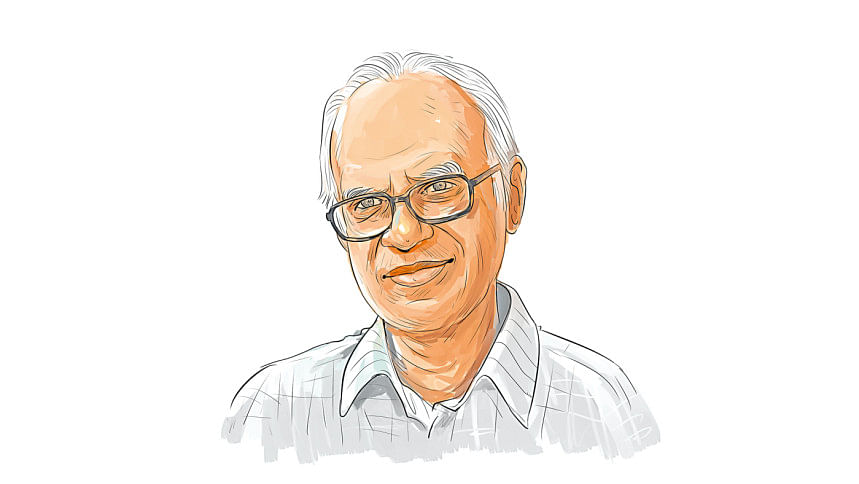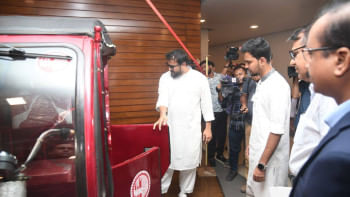Exporters of India’s northeast can use Ctg port

Planning Adviser Wahiduddin Mahmud yesterday said exporters from India's northeastern states can use the Chattogram port, but it would be better if they process their goods in Bangladesh and export those through the port.
"The Chattogram port is a very valuable asset for us, while the northeastern states of India have a lot of natural assets," the adviser said.
"They have cane, timber and minerals, and we can allow the export of those goods through the Chattogram port. But the best practice would be to allow the export of those goods only if we can process them in Bangladesh and add value before allowing export."
He made the remarks while speaking at a seminar titled "Economic Corridor and Logistics Development in Bangladesh: Investment Opportunities," which was jointly organised by the International Chamber of Commerce-Bangladesh (ICC-B) and the Asian Development Bank (ADB) at Sheraton Dhaka.
Mahmud also said such a move would be mutually beneficial.
He added that Bangladesh's strategic geographic location puts it in a strong position to become a hub for neighbouring countries such as India, Bhutan and Nepal.
"Similarly, when we allow Bhutan and Nepal to use the Mongla port, it will serve as a hinterland for trade and commerce in some areas of West Bengal.
So, if we have the will, we can create a favourable geopolitical environment and also enjoy geoeconomic benefits," the planning adviser said.
The interim government has prioritised only two mega-projects — the Matarbari Deep Seaport and Chattogram Bay Terminal — believing they will position Bangladesh as a key geoeconomic hub in the region.
He added that the interim government has not taken up any new mega-projects, as it is busy financing the 1,200 unfinished and ongoing projects undertaken by the previous government.
There is no scope to launch new projects, he said, adding that unless such high-cost infrastructure — built with borrowed money — promotes export-oriented industries, there will be balance of payment problems in the future.
Mahmud also suggested that river shifting be considered when planning economic corridors. For instance, the Padma River is shifting.
He noted there are many anomalies in terms of prioritisation and design during the planning phase of projects.
Anisuzzaman Chowdhury, special assistant to the chief adviser with authority over the finance ministry, said there is no doubt that connectivity must be improved for business purposes.
"Korea, Japan and China faced similar connectivity issues from 1967 onwards, but they overcame them and are now in a better position. Bangladesh can also do so," he said.
He also addressed apprehensions and misconceptions about the country's upcoming graduation from the group of least developed countries (LDCs) in late 2026.
Alongside garments, Bangladesh needs to diversify its exports by increasing the share of two to three more items in its export basket, such as pharmaceuticals, leather and electronic products, to take the country to the next level of development, he said.
Md Mahbub Ur Rahman, chief executive officer of The Hongkong and Shanghai Banking Corporation Ltd, said Bangladesh should seek comparative advantages and identify two or three more export items like readymade garments, which account for over 80 percent of the country's export earnings.
He also suggested that the government find ways to increase inward remittance and negotiate the signing of free trade agreements and preferential trade agreements.
Mir Nasir Hossain, a former president of the Federation of Bangladesh Chambers of Commerce and Industry (FBCCI), said that if transportation costs are competitive, Bangladesh can also be competitive in trade.
If Bangladesh can reduce logistics costs by 1 percent, exports will rise by 7.4 percent, he said, citing a study by the World Bank.
Selim Raihan, executive director of the South Asian Network on Economic Modelling, said Bangladesh must consider infrastructure, policy and foreign direct investment before building an economic corridor.
Bangladesh must not forget the business environment when considering the economic corridor, he added.
In his inaugural address, Hoe Yun Jeong, country director of ADB's Bangladesh Resident Mission, highlighted the ADB's longstanding support for infrastructure development and regional integration in Bangladesh.
While moderating the seminar, Mahbubur Rahman, president of ICC Bangladesh, spoke about the importance of coordinated efforts between the public and private sectors to unlock investment opportunities, enhance connectivity, and improve trade logistics across regions.
Rahman also said Bangladesh stands at a critical juncture in its development journey, where the modernisation of logistics, infrastructure, and the strategic development of economic corridors can unlock unprecedented growth.
These corridors — which link industrial hubs with ports, border crossings and global value chains — have the potential to drastically improve trade efficiency, attract foreign direct investment, and stimulate balanced regional development.
With the country set to graduate from LDC status in 2026, enhancing transport connectivity and reducing logistics costs have become vital for sustaining export competitiveness and fostering inclusive economic transformation, Rahman added.

 For all latest news, follow The Daily Star's Google News channel.
For all latest news, follow The Daily Star's Google News channel. 



Comments